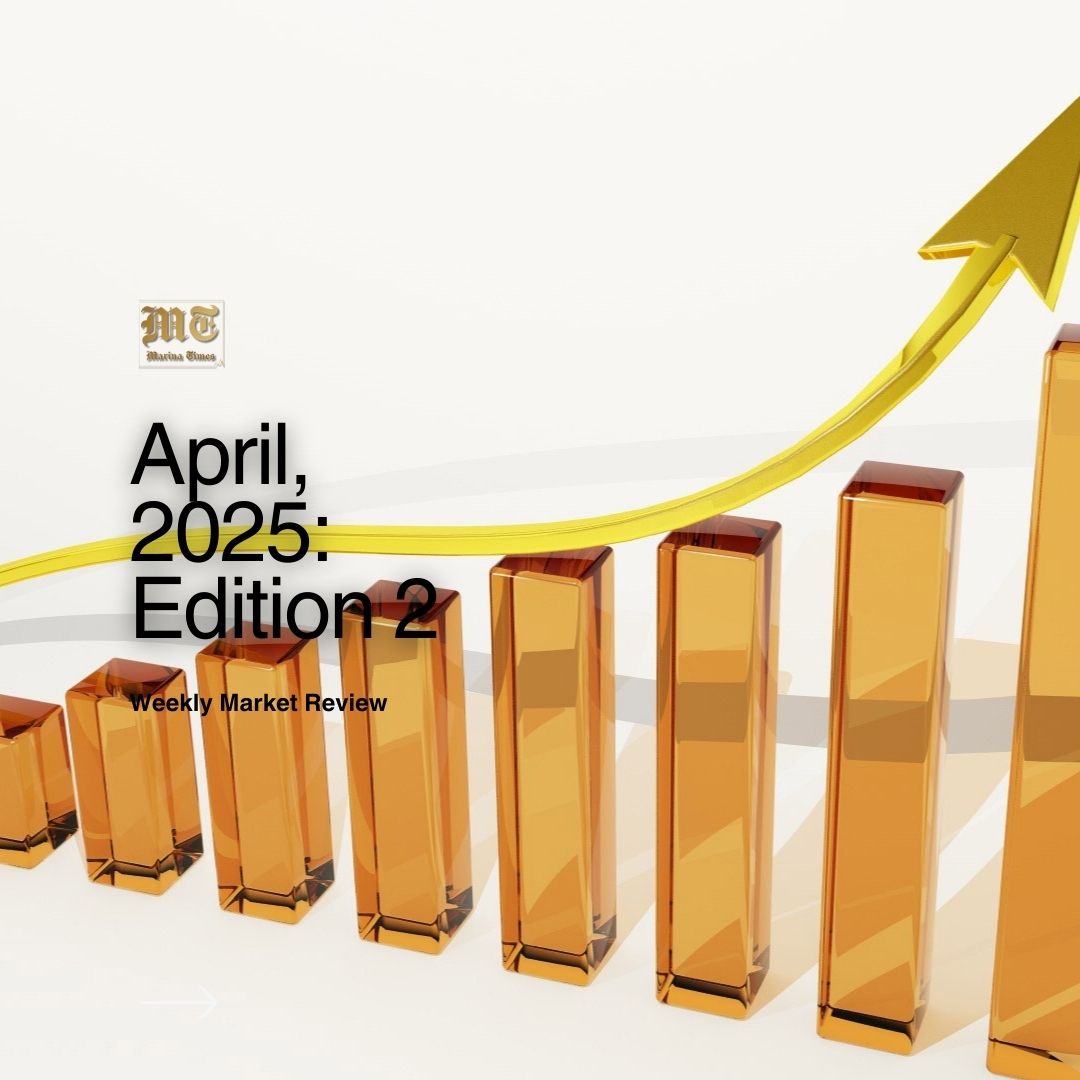

A sneak peek into the Treasury Bills auctions in the first quarter of 2025 reveals a deliberate and strategic approach to liquidity management and management of interest rates. During this period, the Debt Management Office (DMO) sold approximately ₦5.5 trillion worth of Treasury Bills while rejecting bids in excess of ₦9.7 trillion, indicating a bid-to-cover ratio of nearly 2:1.
With no Treasury Bills auctions conducted in the first week of April, the DMO conducted its first auction for the second quarter of 2025 in the second week of April. This recent auction has been construed by many to be consistent with a strategic recalibration in the CBN’s monetary policy approach. Departing from its previous pattern of favouring longer-term instruments, the DMO significantly increased allotments for the 91-day and 182-day tenors while reducing the allotment for the 364-day tenor.
The regulatory actions carry notable implications in light of the unfolding and relentless global trade war. As an import-reliant economy, Nigeria is vulnerable within the global supply chain. Tariff-induced disruptions to international trade could directly and indirectly pressure oil prices due to global pricing distortions, being Nigeria’s fiscal lifeline, and, as observed last week, in the inflated costs of imported goods.
In the week under review, system liquidity was appreciable except on Thursday, when a deficit in liquidity was observed. This was a result of the NTBs auction that settled that day. In line with this, short-term borrowing rates saw a slight increase, with the O/N rate rising to 26.96% from the previous week’s 26.86%, while the OPR also rose to 26.58% from the previous week’s 26.50%. The money market opened Friday with a liquidity surplus of ₦303.042 billion. The Naira fluctuated between a high of $/₦1,655.00 on Monday and a low of $/₦1,500.00 on Thursday, closing at $/₦1,626.00 on Friday.
The rejection of bids in Q2 2025 suggests that the regulators are exercising caution in their liquidity absorption strategy, possibly aiming to prevent excessive tightening of monetary conditions. By accepting only a portion of bids, regulators can control the amount of liquidity withdrawn from the system, thereby influencing short-term interest rates without causing any undue strain on market participants.
However, the high level of (rejected) bids also reflects pronounced investor appetite for government securities, particularly in the high-interest-rate environment. The demand pressure could be indicative of investors seeking safe havens amidst economic uncertainties or anticipating future rate adjustments.
We believe that it is safe to adduce that the regulatory disposition evidenced in Q1 2025 demonstrates a balancing act by tightening liquidity to manage inflation and currency stability while ensuring that the financial system remains adequately funded to support economic activity.
At the end of the T-Bills auction last week, and with the slight shift in the pattern of allotment, specifically, ₦50 billion was offered for the 91-day bills, but a substantial ₦111.81 billion was allotted, more than 100% of the initial offer. In the same vein, for the 182-day bills, ₦100 billion was offered, with an allotment of ₦105.79 billion. Conversely, despite a massive offer of ₦650 billion for the 364-day bills, only ₦206.98 billion was allotted, far below the offer and at variance to past allotments, where the bulk of liquidity was absorbed through this longer-dated instrument.
This reallocation appears to be a deliberate strategy. For one, the stop rates on the 91-day and 182-day bills saw significant upticks; the 91-day rose by 50 basis points to 18.50%, while the 182-day bill rose by 100 basis points to 19.50%. Interestingly, the 364-day stop rate was held steady at 19.63%, even though the range of bids extended to as high as 24.71%.
The implications for the market are multifaceted. On the one hand, the aggressive sale of short- and mid-tenor bills at higher rates could be a signal of intent to mop up short-term liquidity more decisively, perhaps in response to inflationary pressures or in preparation for anticipated government spending. By doing this, excess cash can be absorbed from the system without pushing the cost of funds too high. On the other hand, the stop rate for the 364-day paper was maintained despite strong subscription levels.
In essence, the regulators appear to be managing interest rate expectations and simultaneously tightening near-term liquidity by keeping long-term borrowing costs from escalating further. All eyes will be peeled on the next auction to observe whether this trend will be sustained.
AUCTION DATE | 09-04-2025 | 09-04-2025 | 09-04-2025 |
ALLOTMENT DATE | 10-04-2025 | 10-04-2025 | 10-04-2025 |
MATURITY DATE | 10-07-2025 | 09-10-2025 | 09-04-2026 |
TENOR | 91-DAY | 182-DAY | 364-DAY |
OFFER (₦) | 50,000,000,000 | 100,000,000,000 | 650,000,000,000 |
SUBSCRIPTION (₦) | 114,296,147,000 | 107,088,948,000 | 905,557,603,000 |
ALLOTMENT (₦) | 111,811,147,000 | 105,788,948,000 | 206,976,091,000 |
STOP RATES (%) | 18.5000 | 19.5000 | 19.6300 |
PREVIOUS STOP RATES (%) | 18.0000 | 18.5000 | 19.6300 |
Recently, Nigerian and other African sovereign Eurobonds have experienced significant selloffs, primarily driven by Foreign Portfolio Investors (FPIs) shifting their capital towards safer assets amid escalating global uncertainties. These exits have led to a notable surge in Eurobond yields, with Nigeria’s average benchmark yield climbing to 11.669% at the close of business on Thursday, at the long end of the curve, the September 2051 Eurobond.
The catalyst for this risk-off sentiment appears to be policy decisions from major economies, notably the United States, which has heightened market volatility and prompted investors to reassess their exposure to emerging markets. The resultant capital flight has exerted upward pressure on yields, reflecting increased borrowing costs for these nations. The risk-off is caused by the uncertainty of the trade wars, especially as the US and China face off.
As it relates to Nigeria, the increase in yields signifies a higher cost of external financing, potentially impacting the government’s fiscal plans and debt servicing obligations. Moreover, the depreciation in prices of Eurobonds could deter future foreign investment as investors seek more stable returns.
Furthermore, the development communicates the link between global economic policies and emerging market economies. Most importantly, this situation calls for prudent economic management and strategies to bolster investor confidence amidst the prevailing global economic climate.
Despite heightened volatility in the market, trading activity across Nigeria’s fixed-income markets remained notably strong, with significant engagements in Treasury Bills, bonds, and OMO segments. There were major sell-offs in the fixed-income markets due to the current trade tariff imposition by the US government and other market uncertainties, pushing the yield curve upward.
While still active, the bond market reflected investor caution in the face of interest rate uncertainty and longer-term risk. In essence, the market remains active as investors are operating but selective. The tilt towards OMOs in terms of value traded reveals a strategic preference for liquidity and short-term gains in an environment digesting the CBNs policy modifications. Considered a play that speaks volumes; although many appear to be showing up, only a few are betting big, and they are betting on flexibility and yield.
In the coming weeks, global attention will remain firmly fixed on the evolving economic standoff between the United States and China as markets digest the ripple effects of the sweeping tariff hikes. While negotiations may emerge to de-escalate tensions, the immediate impact on global markets have been significant, weighing on both equities and fixed-income assets.
The defensive repositioning by global investors also dims prospects for fresh capital inflows into frontier and emerging markets, including Nigeria. The Nigerian Treasury Bills and equities markets are feeling the heat, with yields rising sharply and equity valuations facing downward revisions. Where the global monetary tightening trend intensifies, Nigeria may contend with tighter external financing conditions, a stronger Dollar and potential fiscal slippages.
As a cautionary approach, policymakers in Nigeria need to remain agile and anchor investor confidence through policy clarity, exchange rate stability, and improved macroeconomic management, as these will be critical in navigating the spillover risks from the tariff war and broader global uncertainty.